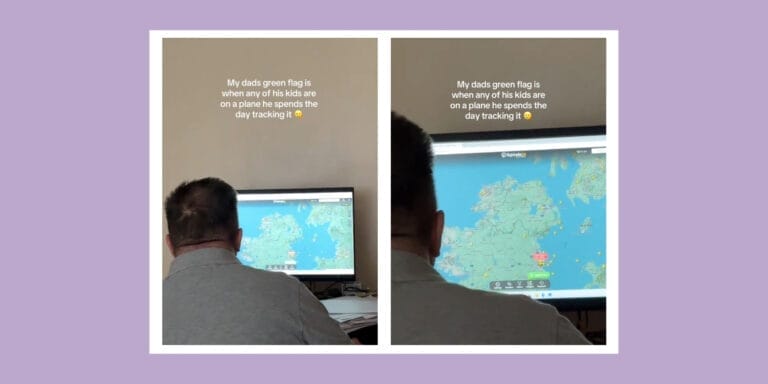How to talk about war and other difficult topics with your children: An age-by-age guide

For 2-year-olds to teenagers.
Table of Contents
One of the toughest jobs of parenting is talking to your kids about difficult subjects. It’s hard enough to explain when a beloved lovey gets eaten by the washing machine, or when a bully acts tough at school. But it can feel impossible to put into words some of the really big issues, such as war, violence, racism and other important topics.
But in the age of constant notifications, streaming video and 24-hour news coverage—when even little kids are exposed to really serious stories—it’s important to face this challenge head-on.
Addressing the tough stuff makes your kids feel safer, strengthens your bond and teaches them about the world.
And when you show them how to gather and interpret information, ask questions and cross-check sources, they become critical thinkers. It’s always hard to confront the issues the world hasn’t been able to solve. But by investing our kids with knowledge, compassion and strong character, we can give them all the tools they need to make things better.
When your kids learn about something scary or unsettling, most parents get that deer-in-the-headlights feeling. But it’s always a good idea to use your kid’s age and developmental stage as a guide to starting conversations, because they absorb information differently as they grow from babies to teens.
Understanding a bit about how kids perceive the world in each phase of their development helps you deliver information about it in the most age-appropriate way. Of course, every child brings his or her own sensitivities, temperament, experience and other individual traits to any conversation. So use your best judgment as to how your child tends to takes in information to determine how deep to go.
Here’s how to talk to kids ages 2 to teen about difficult subjects based on childhood-development guidelines
Age 2 through age 6
Young children don’t have enough life experience to understand some of the elements involved in complex, difficult topics. They also don’t have a firm grasp on abstract concepts or cause and effect. Because they and their primary relationships (mama, dad, siblings, grandparents, even the family dog) are the center of their world, they focus on how things affect them.
They’re very sensitive to parents’ emotional states and can worry that they did something to make you upset. All of this makes it challenging to explain big issues. On the other hand, you’re better able to manage their media exposure, and they can usually move on fairly quickly.
- Keep the news at bay. Do what you can to limit small kids’ exposure to age-inappropriate subjects by turning off or muting the TV and choosing media that’s targeted to their age.
- Reassure with both words and gestures. Say, “You’re safe. Mommy and daddy are safe. And our family is safe.” Hugs and snuggling work wonders, too.
- Address feelings—yours and theirs. Say, “It’s okay to feel scared, sad or confused. Those feelings are natural and we all feel them.” Also try: “I’m upset, but I’m not upset not with you.”
- Find out what they know. Your kids might not understand the issue very well. Ask them what they think happened before giving them any imagery.
- Break down issues to their simplest terms. For war, you might say, “Sometimes, countries or groups of people have strong disagreements, and they might fight. It’s like when kids argue, but on a much bigger scale.” For violent crime, you might say, “Someone used a gun to hurt people.” For hate crimes, try, “Some groups of people still aren’t treated equally or fairly.”
- Catch your own biases. We all have them. Say, “man,” “woman,” “person,” “girl,” and “boy,” not “fat guy,” “homeless lady,” “pretty little girl,” or “white boy.” Avoid describing a person’s ethnicity, sexual identity, weight, financial status and so on unless it’s relevant to the issue.
- Use vocabulary, ideas and relationships that they’re familiar with. Recall a recent, similar situation from their lives that they can relate to. Say, “A person stole something. Remember when someone took your lunchbox?”
- Use basic terms for feelings such as “mad,” “sad,” “afraid,” “happy” and “surprised.” Young children understand emotions, but they don’t totally understand mental illness. You can say that someone was angry too much or confused too much and needed extra help. Avoid idiomatic expressions such as “blew a gasket” or “flew the coop.”
- Communicate that someone’s in charge. Say, “Mommy and daddy will make sure nothing bad happens to our family.”
Age 7 through age 12
Because kids in this age group can read and write, they get exposed to age-inappropriate content more often—but younger kids in this range are still a little shaky on what’s real and pretend. As kids gain abstract-thinking skills, real-world experience and the ability to express themselves, they can grapple with difficult subjects and understand different perspectives.
Because tweens are separating from their parents, entering into puberty and interacting with media more independently, they come into contact with violent video games, pornography, distressing news and hate speech. They need to be able to discuss things without feeling shame or embarrassment.
- Wait for the right moment. At this age, kids are still very likely to come to you if they’ve heard about something frightening. You can feel them out to decide if they want to discuss something, but if they don’t bring it up, don’t feel you have to broach difficult subjects until they ask.
- Find out what they know. Ask your kids what they’ve heard, or if their friends at school are talking about something. Answer questions simply and directly, but try not to over-explain—that could make them more scared.
- Create a safe space for discussion. Say, “these topics are hard to discuss, even for adults. Let’s just talk. I won’t be mad, and I want you to feel free to ask anything you want.”
- Provide context and perspective. Kids need to understand the circumstances around an issue to fully make sense of it. For a mass shooting, you can say, “the person who did this had problems in his brain that confused his thoughts.” For race-based crimes, try, “some people wrongly believe that light-skinned people are better than dark-skinned people. Without the correct information, they sometimes commit crimes they think are justified.”
- Address their curiosity. If your kid stumbles across grown-up material online, it might be time to find content that will let them learn about more mature subjects age-appropriately. Say, “online pornography is something that some grown-ups look at. But it’s not about love or romance and it can give you the wrong idea about sex. If you want to learn more about sex, I can give you some books to look at and we can talk more if you have questions.” Or if your kid wants to explore serious topics in more depth than you can provide, say, “let’s find some news sources that offer current events written for kids.”
- Be sensitive to kids’ emotions and temperament. You never know what may trigger your kid. Check in by sharing how you feel and ask them how they feel. Say, “I feel angry when I know that someone got hurt.” Or, “It makes me feel sad to hear that someone didn’t get a good education or the right treatment to help them.” And, “what are you feeling right now?”
- Encourage critical thinking. Ask open-ended questions to get kids to think more deeply about serious topics. Ask, “what did you hear?,” “what did it make you think?,” and “why do you think that?” For older kids, you can ask, “do you think families from other backgrounds would view this the same way as us?”
- Look for positives. There may not be a silver lining to every cloud, but try to be optimistic. Say, “a lot of people are acting like heroes to defend their country.” Or, “let’s find ways that we can help.”
Teens
At this age, teens are engaged in media independently by reading it, interacting with it and even making their own and sharing it in the form of comments, videos and memes. They often hear about difficult subjects in the news or from other places, like in video game chats or on social media, without your knowledge. They’re much more interested in what their friends or online folks think about an issue than in your opinion, often scrolling to the bottom of an article to read user responses before they even read the whole story. They can bristle at parental lectures because they think they know best, so encourage them to find media that can enrich their knowledge and ask questions that prompt them to think through their arguments.
- Encourage open dialogue. Teens need to know that they can ask questions, test their opinions and speak freely without fear of consequences. Say, “we may not agree on everything, but I’m interested in what you have to say.”
- Ask open-ended questions and ask them to support their ideas. Say, “what do you think about police brutality?,” “what do you know about it?,” “who do you think is at fault?,” and “why do you think that?”
- Admit when you don’t know something. As kids move into the teen phase, it’s OK for them to see that their parents may not have all the answers. Say, “I don’t know. Let’s try to find out more.”
- Get them to consider the complexities in difficult subjects. Forces including social issues, politics and tradition all contribute to making some problems seem incurable. Ask, “what makes difficult issues, such as rape, violence and crime so hard to solve?,” “what key things would need to change to fix certain issues, such as poverty?,” “how do policymakers get to the bottom of an issue to correct tough problems?,” and “should we accept tiny changes that help a problem little by little or insist on big changes?”
- Share your values. Let your kids know where you stand on issues and explain why you hold certain values. If you want your teens to be respectful of others’ differences, for example, explain why you value tolerance and acceptance.
- Talk about “their” news. Prompt them to consider how different sources put their own spin on the issues and how that influences an audience’s opinion of an issue. Facebook, Instagram and Snapchat tend to serve up content from friends with stories that tend to confirm one point of view. How do these stories compare to news broadcasts on TV? How about sources designed for millennials, like Vice and Vox that feature reporters investigating stories in the trenches? Ask, “does a reporter have to experience that situation to be able to report a story on opiate addiction?”
- Ask what they would do if they were in a really difficult situation. Teens are figuring out their own identities and can seek out risk. Considering how they would act if confronted with a terrible reality appeals to their own sense of adventure and is a way to get them to grapple with ethical dilemmas and see themselves making good choices. Say, “if you were caught in a political demonstration that turned violent and you saw people being mistreated, what would you do?”
- Get them to consider solutions. Teens can be cynical, but they can also be idealistic. If anything is going to get better, it’s this generation who’s going to make it happen. Show them that you trust them for the job. Ask, “If you were in charge, what issue would you solve first—and how would you do it?”
Reposted with permission from Common Sense Media. A version of this post originally appeared on April 20, 2021. It has been updated.


































